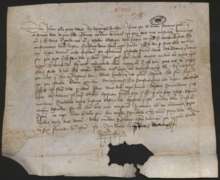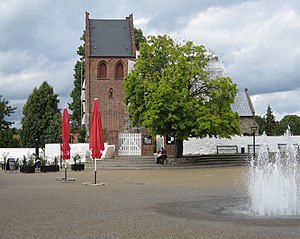동적 주파수 선택
Dynamic frequency selectionDFS(Dynamic Frequency Selection, DFS)는 일반적으로 Wi-Fi로 알려진 무선 LAN에 대해 지정된 채널 할당 체계다. 군용레이더, 위성통신, 기상레이더 등 와이파이를 앞섰던 C밴드 주파수 대역의 다른 이용에 대한 전자기 간섭을 방지하기 위한 것이다.[1] IEEE 802.11h의 일부로 2003년에 표준화되었다.
메커니즘
접근 지점은 규제 요건에 기초하여 간섭 수준이 낮은 주파수 채널을 자동으로 선택한다. 레이더 탐지의 경우, 접속 지점이 자동으로 채널을 선택하도록 구성되면 채널이 전환된다. 수동으로 채널을 선택했다면 DFS로 인해 액세스 지점이 오프라인 상태가 된다.
그것이 시행되는 실제 메커니즘, 레이더 펄스 패턴, 전력 수준 및 주파수 대역은 국가와 관할권에 따라 다르다. DFS는 FCC에 의해 미국의 5470–5725 MHz U-NII 대역에 대해 의무화된다.[2] 인도의 경우 5250~5350, 5470~5725MHz 대역의 경우 DFS가 의무적이다.[3]
기상 레이더 간섭
와이파이 도입에 앞서 5GHz 대역의 가장 큰 어플리케이션 중 하나가 터미널 도플러 기상 레이더였다.[4][5] 와이파이에 5GHz 스펙트럼을 사용하기로 한 결정은 2003년 세계방사선통신회의에서 확정됐지만 이 과정에 기상계는 관여하지 않았다.[1][6] 후속적으로 느슨한 구현과 잘못된 DFS 구성은 전 세계 여러 국가에서 날씨 레이더 운영에 상당한 혼란을 야기했다. 헝가리의 경우 한 달 넘게 기상 레이더 시스템이 작동하지 않는다는 판정을 받았다. 남아공 기상대는 간섭이 심해 결국 C밴드 운영을 포기해 레이더망을 S밴드로 전환했다.[5][7]
참조
- ^ a b Touw, Ron (Nov 16, 2016). "Radar Detection and DFS on MikroTik" (PDF). Radar Detect and DFS on MikroTik. MikroTik. Retrieved 4 December 2019 – via YouTube.
Decision ERC/DEC/(99)23 adds 5250-5350MHz and 5470-5725MHz with more Tx power but with the added caveat that DFS was required to protect legacy users (Military Radar and Satellite uplinks)
- ^ "5GHz Agreement". Ntia.doc.gov. 2003-01-31. Retrieved 2012-08-29.
- ^ "G.S.R. 1048(E) dated 18th October 2018" (PDF). dot.gov.in. 2018-10-18. Retrieved 2022-01-05.
- ^ Spain, Chris (July 10, 2014). "Winning Back the Weather Radio Channels Adds Capacity to 5GHz Wi-Fi Spectrum". Cisco Blogs. Cisco. Retrieved 4 December 2019.
The FCC ruling is re-opening the Terminal Doppler Weather Radar (TDWR) band (channels 120, 124, 128) with new test requirements for DFS protection.
- ^ a b Saltikoff, Elena (2016). "The Threat to Weather Radars by Wireless Technology". Bulletin of the American Meteorological Society. 97 (7): 1159–1167. doi:10.1175/BAMS-D-15-00048.1. ISSN 0003-0007.
Since 2006, interference to C-band radars from RLAN is increasingly experienced by most OPERA members. ... The South African weather services initially tried to implement specific software filtering to improve the situation but then decided in 2011 to move its meteorological radar network to S band.
- ^ Tristant, Philippe (23–24 October 2017). "C-band meteorological radars - Threats related to RLAN 5 GHz" (PDF). EUMETNET. Retrieved 5 December 2019 – via itu.int.
- ^ Tristant, Philippe (16–18 September 2009). "RLAN 5 GHz interference to weather radars in Europe" (PDF). International Telecommunication Union. Retrieved 4 December 2019.
More than 12 European countries experienced such interference cases (other cases have now been reported in number of countries in the world). Definitively harmful interference (in Hungary, the radar was declared as non-operational for more than 1 month)



